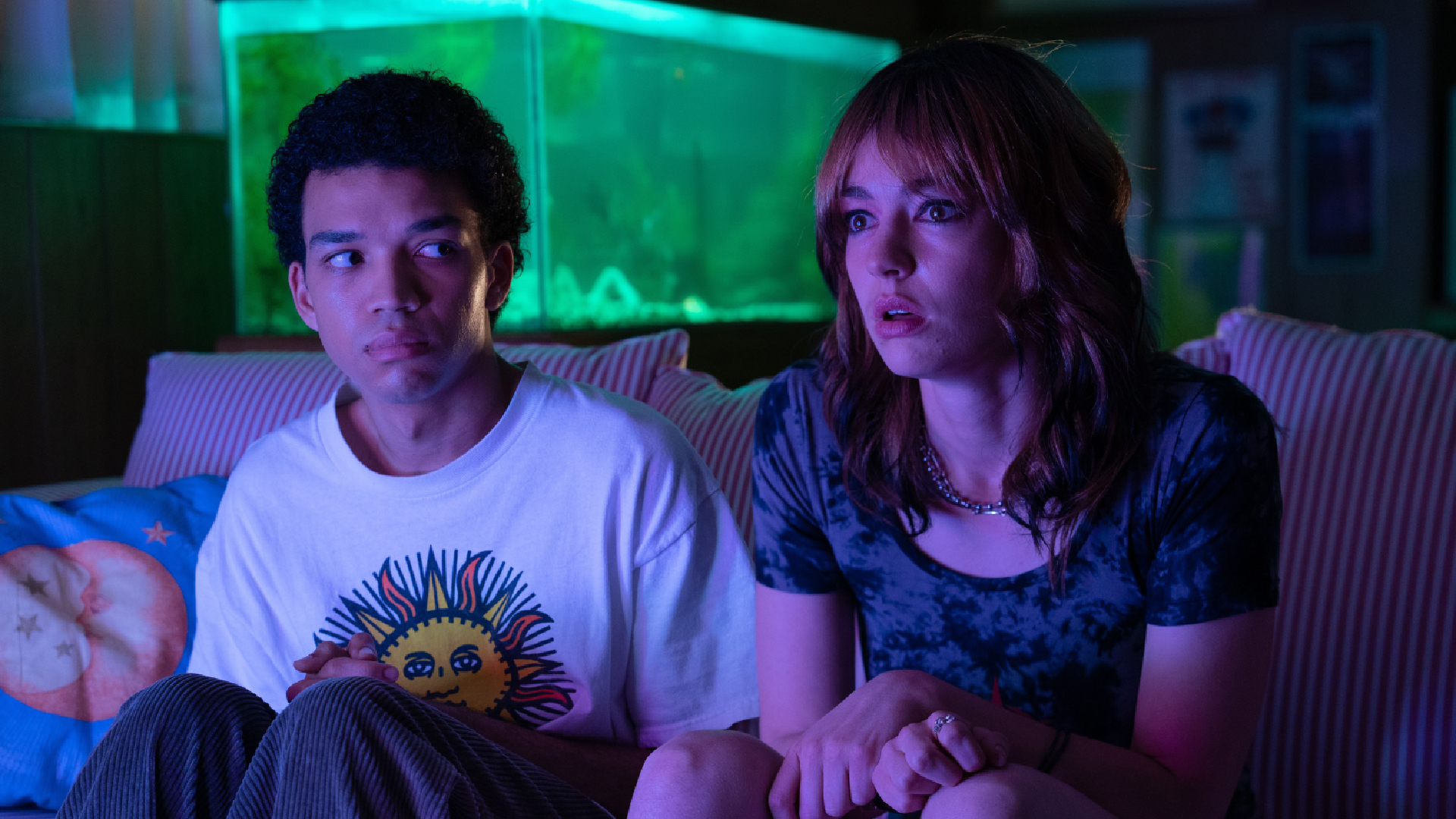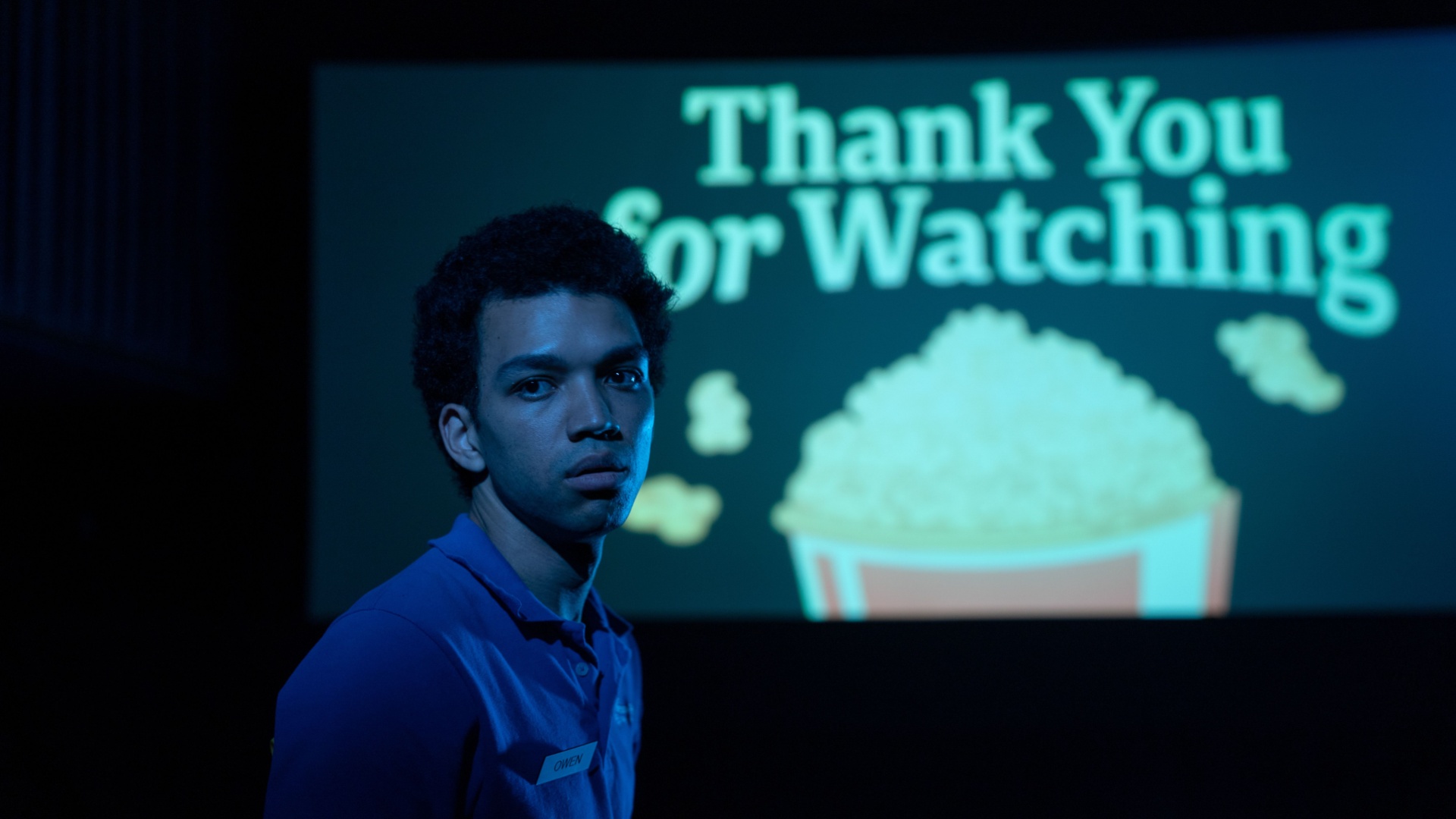2024's best horror movie won't scare you in a traditional sense, but that's exactly why it's so hauntingly powerful
Opinion | Our writer on why I Saw The TV Glow is one of the scariest films of the year

What scares you might not scare someone else. And it's not just clashing opinions within the horror community that divide us on what's truly terrifying. What you yourself find scary evolves over time too. But even if horror you're familiar with holds less power over you than it used to, there's something about the scares you first encounter as a child that hold a unique ability to unsettle above all else, even if as an adult you wouldn't bat an eyelid if you came across these stories for the first time now.
Thinking back to those early horrors can bring on a kind of reverse-nostalgia, a childhood comfort turned sour that you can only remember in parts like a fading dream or nightmare. That's the uniquely strange sensation that I Saw The TV Glow excavates from the unconscious corners of your mind.
Caught in the glow

Jane Schoenbrun's sophomore feature begins in 1996 where a lonely teenager named Owen (played first by Ian Foreman and then Justice Smith) makes friends with another loner named Maddy (Brigette Lundy-Paine) in high school. The misfit pair bond over their shared fascination with a late night TV show, The Pink Opaque, which evokes Buffy the Vampire Slayer and weird Nickelodeon shows such as The Adventures of Pete & Pete or Are You Afraid of the Dark?.
Together they watch characters Isabel and Tara use their psychic connection to fight an evil adversary, Mr. Melancholy, who haunts them with his moon-shaped face in the Nightmare Realm. Except, Owen's father thinks the show is for girls, so Owen watches VHS tapes Maddy records for him in secret. Caught in the TV's glow late into the night, what's real and what's not begins to blur for Owen more and more until Maddy suddenly disappears one day and The Pink Opaque is mysteriously cancelled.
Who hasn't felt like something's not right in their lives? That something intangible, something unknowable is wrong, as if you're just one step out of sync with the rest of the world?
As Owen questions the suburban life he's surrendered to, existential dread threatens to choke him entirely, and this is what stays with the audience days, weeks, even months after the film has ended.
Who hasn't felt like something's not right in their lives? That something intangible, something unknowable is wrong, as if you're just one step out of sync with the rest of the world? It's a universal feeling to some degree, as if life itself is suffocating and you don't know where to turn, but it's especially true for audiences whose identity, whose very essence is othered by those who don't understand.
Midway through, Maddy laments that "this isn’t how life is supposed to feel" and therein lies the true horror of this story. More so than the shots that linger to an uncomfortable degree, more so than the unsettling imagery married to chilling sound design: I Saw The TV Glow is dysphoric to a nihilistic degree.
Sign up for the Total Film Newsletter
Bringing all the latest movie news, features, and reviews to your inbox
There is still time

No film has better captured that feeling in relation to queerness specifically — and that's especially true for those who grew up in a time before the internet existed to help educate and unite us. As we're reminded through Owen's own despairing narrative, it's near impossible to healthily navigate nascent gender and sexuality in the absence of community, be it other queer people or even that notion of feeling seen when watching your favorite show. But to conform hollows you out entirely, filling you with a literal void, one consisting of buzzing static in Owen's case.
It's no coincidence that I Saw The TV Glow reads best as a trans allegory because Schoenbrun themself is non-binary, making the so-called "subtext" far more integral to the film's impact than some cis audiences might have noticed. The realms of reality that shift back and forth in front of and behind the TV screen mirror the liminal space these characters occupy where they can't even fully express who they are because they don't quite get it themselves yet.
I Saw The TV Glow doesn't just ask us to consider the fear behind not living our authentic selves. It hits us with the terror that comes with being someone you're not, of living a life that doesn't belong to you.
Owen pushes all that down over the years until he's nothing more than a husk, shuffling around his dead-end job before he finally reaches breaking point in his twilight years. By taking us on that journey, I Saw The TV Glow doesn't just ask us to consider the fear behind not living our authentic selves. It hits us with the terror that comes with being someone you're not, of living a life that doesn't belong to you.
Discomfort and confusion turn to despair, but there's hope in this too. As late as it is, Owen does finally confront the inner reality he's long suppressed. And even if there's not much time left to do anything about it, there is still time. These words, "there is still time," are scrawled in graffiti across a road in Owen's suburban hellscape, echoing this idea that it's never too late to discover yourself.
If that doesn't sound particularly scary to you, just remember that the alternative is more horrifying than you could ever imagine.
I Saw The TV Glow is available to stream on Max. Want to know what's coming your way next year? Check out our guide to upcoming horror movies.

With ten years of online journalism experience, David has written about TV, film, and music for a wide range of publications including Indiewire, Paste, Empire, Digital Spy, Radio Times, Teen Vogue and more. He's spoken on numerous LGBTQ+ panels to discuss queer representation and in 2020, he created Digital Spy's Rainbow Crew interview series, which celebrates queer talent on both sides of the camera via video content and longform reads. Passions include animation, horror, comics, and LGBTQ+ storytelling, which is why David longs to see a Buffy-themed Rusical on RuPaul's Drag Race.


